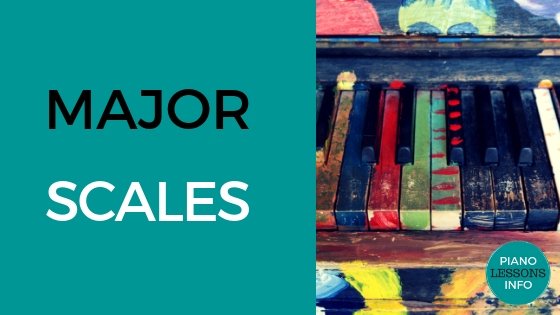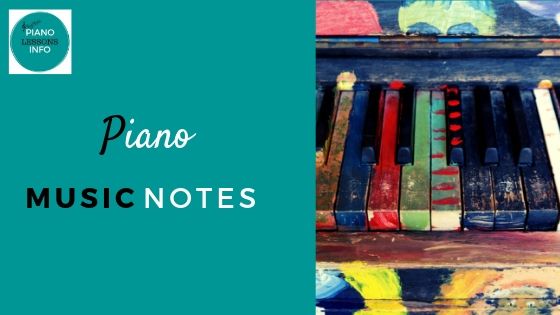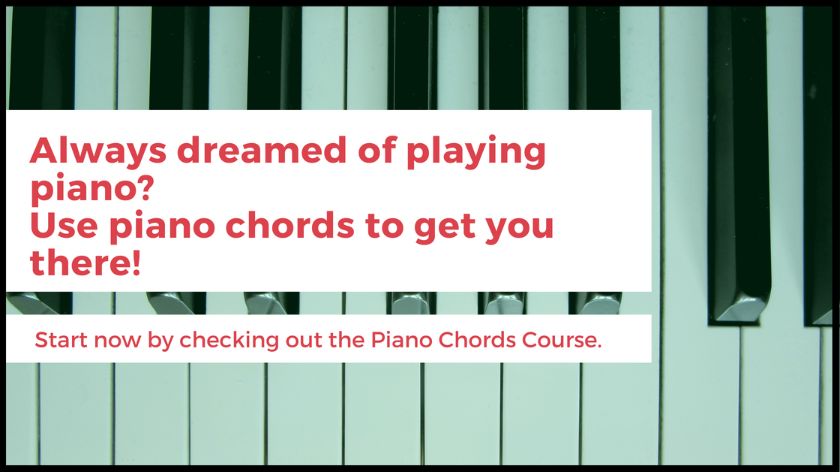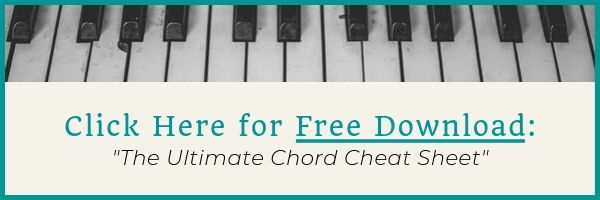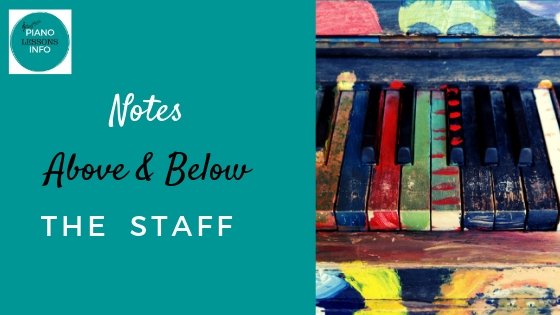Want A Piano Notes Chart?
Here I’ve a got a piano notes chart for a couple of different things. There’s a chart for notes in the treble clef, notes in the bass clef, and a chart of the types of notes you’ll see on the clefs. If you need more information on how to read the notes, check out
read piano notes.
The Piano Keys
If you are in the beginning stages of learning piano, one of the key things that is really important is making sure you know which notes are what on the piano.
Here are the names of the notes on the piano keys. (You can also get a complete explanation here on the piano key notes page.)
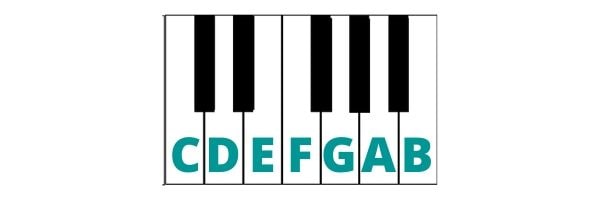
Note Name Charts
Below you can find all the piano notes charts needed for reading music. The first thing you need to know is the letter names that go on the lines and spaces of the bass clef and treble clef.
Treble Clef: Note Names on the Lines
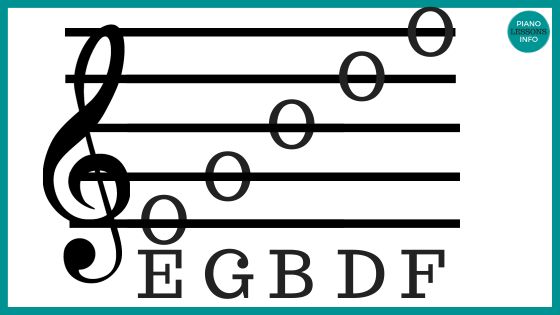
Treble Clef: Note Names on the Spaces
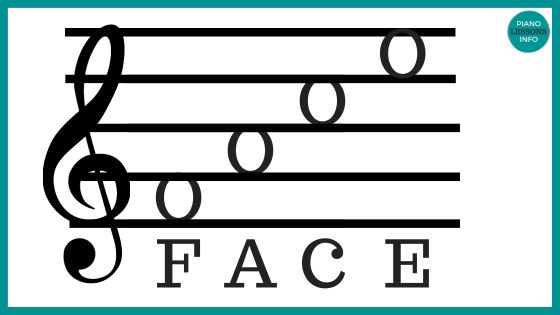
Bass Clef: Note Names on the Lines
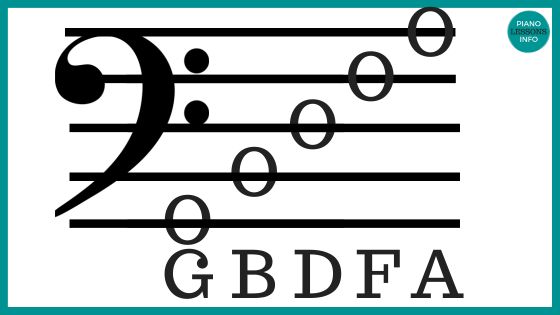
Bass Clef: Notes Names on the Spaces
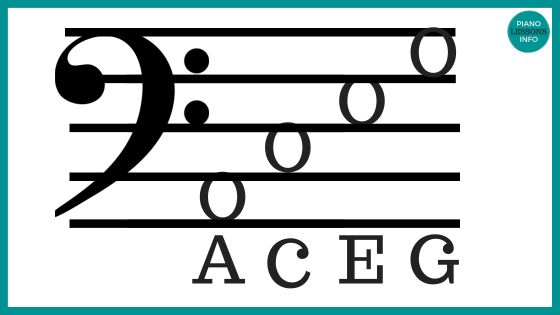
How the Note Names Match the Piano
Every note on the piano matches a note on the bass and treble clefs. Note all notes on the piano are on the 5 lines and 4 spaces though. There are ways to notate going beyond that but at this point, what is important for you is to map it out.
Middle C, often the first note used when teaching piano, is not on the lines and spaces. But the E on the lowest line of the treble clef is 2 notes above middle C.
Here is now things map out.
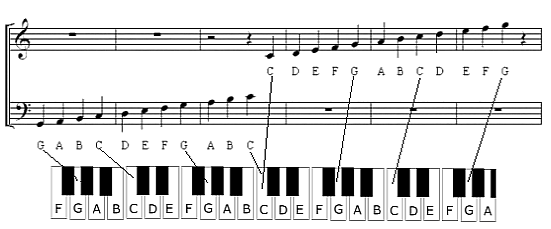
Easy to Print Piano Notes Chart
Treble Clef Spaces

Treble Clef Lines

Bass Clef Spaces

Bass Clef Lines

Notes and Their Length
Here’s a chart of the different types of notes. You’ll see the amount of “counts” they get. (If you need more information on how to “count” in music, go to piano music notes or music rhythm symbols.)
In music, you need to know where to play the note and also how long to hold the note. There are names of types of notes that you'll see below, like a whole note which gets 4 beats.
A whole note (or any other note) can be placed on any line or space in the piano note charts above.
For example, a whole note on B in the treble clef means you hold B for 4 beats.
Whole Note
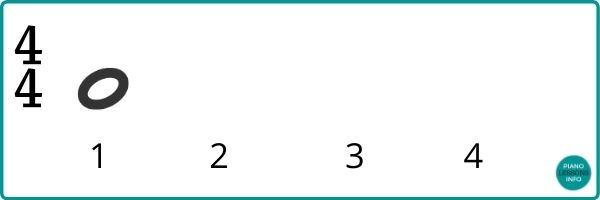
Whole notes get held for 4 beats.
Half Note
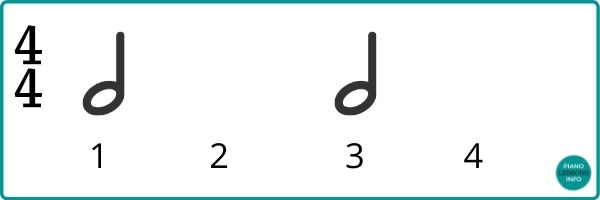
Half notes get held for 2 beats.
Quarter Note
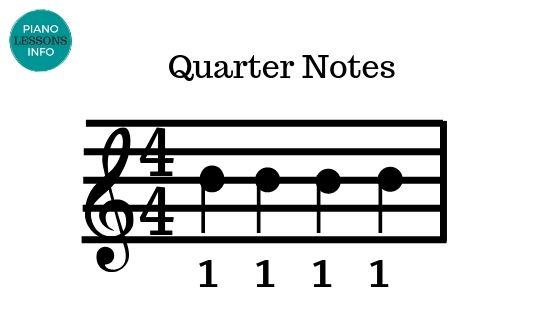
Quarter notes get held for 1 beat.
Eighth Note
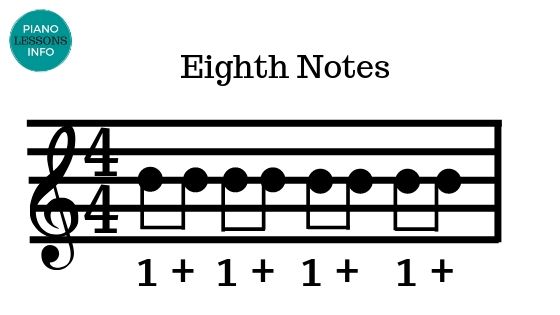
One eighth note gets half of one beat in 4/4 time. Two eighth notes are equal to one beat.
Eighth notes can be written differently depending on their context. If they are surrounded by other 8th notes, they will generally have a line connecting them on the top or bottom. (As above.)
One 8th note, written by itself, will have a flag as seen below. They are the same note. The note below gets half a beat.
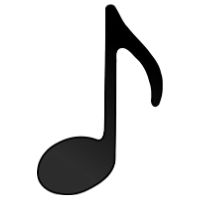 One 8th note by itself will be have a flag on the stem.
One 8th note by itself will be have a flag on the stem.Sixteenth Note
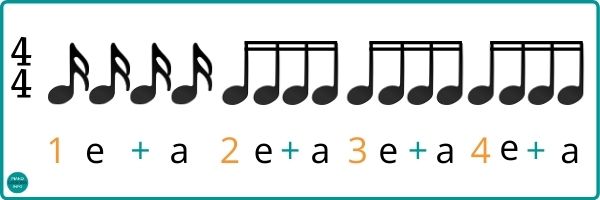
One sixteenth note is equal to a quarter of a beat in 4/4 time. If that is hard to absorb, you can think of it this way, four 16th notes are equal to one beat.
Two or more sixteenth notes written together are generally joined together but a double line at the top (or bottom if reversed) of the stem. (As above).
If a sixteenth note is written by itself, it will have 2 flags as seen below.
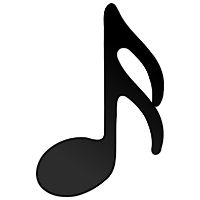 One sixteenth note
One sixteenth noteRhythm Piano Notes Chart
Use the following as an easy to reference guide.
Whole Notes: 1 note = 4 beats.

Half Notes: 1 note = 2 beats.

Quarter Notes: 1 note = 1 beat.

8th Notes: 1 note = 1/2 a beat

16th Notes: 1 note = 1/4 of a beat

Piano notes games
These games we created will help you learn the notes easily.
How about this rhythm quiz. See more free music rhythm games and quizzes.
If you’d like a diagram of which piano keys go with which notes, go to
piano diagrams. That’s it for the charts!
Return from Piano Notes Chart to Piano Lessons Info Homepage.
Free Download:
Ultimate Chord Cheat Sheet

Subscribe below and get free access to the (printable) Ultimate Chord Cheat Sheet.
Free Download:
Ultimate Chord Cheat Sheet

Subscribe below and get free access to the (printable) Ultimate Chord Cheat Sheet.
- Home
- Beginning Lessons
- Piano Notes Chart



